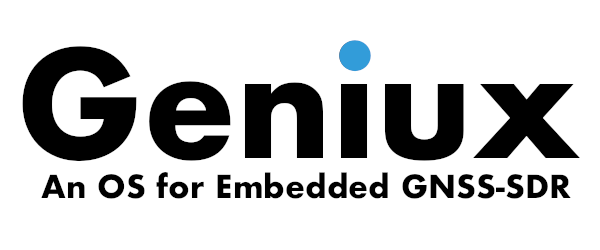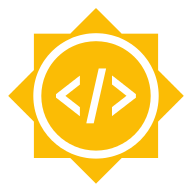How to contribute

Contributing to GNSS-SDR
Found a bug in the code? Interested in adding a new feature or fixing a known bug? Then by all means submit an issue or pull request. If this is your first pull request, it may be helpful to read up on the GitHub Flow first. If you need a quick introduction to Git and its parlance (concepts such as repository, commit, push, pull-request, etc.), check our Git tutorial. This project adheres to the Contributor Covenant code of conduct. By participating, you are expected to uphold this code.
Any code contributions going into GNSS-SDR will become part of a GPL-licensed, open-source repository. It is therefore imperative that code submissions belong to the authors, and that submitters have the authority to merge that code into the public GNSS-SDR codebase.
For that purpose, we use the Developer’s Certificate of Origin. It is the same document used by other projects. Signing the DCO states that there are no legal reasons to not merge your code.
To sign the DCO, suffix your git commits with a Signed-off-by: line. When
using the command line, you can use git commit -s to automatically add this
line. If there were multiple authors of the code, or other types of
stakeholders, make sure that all are listed, each with a separate
Signed-off-by: line.
The basic setup steps for a contribution to the source code are the following:
-
If you still have not done so, create your personal account on GitHub.
-
Fork the GNSS-SDR source code repository from GitHub. This will copy the whole source code repository into your personal account.
-
Then, clone your forked repository into your local machine, checkout the
nextbranch, branch off from it, and start working on the source code. -
Be sure to sign your commits to indicate that you fulfill the Developer’s Certificate of Origin.
-
When your contribution is ready, head your browser to your GitHub repository, switch to the branch where your contributions are, and click the Pull Request button.
More details are available in the CONTRIBUTING.md file.
Before start working in GNSS-SDR source code, especially if you want to contribute your changes back to the upstream repository, you may be interested in having a look at our coding style guide. The usage of clang-format for automated code formatting is highly recommended.
Contributing to this website
Found a typo on this website? Interested in giving your thoughts on existing pages, adding a post, tutorial, new feature, or enhancement?
This website itself lives in a GitHub repository. You can contribute in several ways:
-
Commenting (through your Google, Facebook, or Twitter account, or just open a new profile at Disqus) in the boxes such as the one at the bottom of this page. Moderation will be applied only in cases of flagrant off-topic or unappropriated style (see our code of conduct).
-
Sharing the content on your favorite social network.
-
Checking existing open issues or submitting a new one.
-
Forking this web, cloning the repository, branching off from the
mainbranch, working on the changes in your own repository, and making a pull request.
How to run this website locally
The required software can be installed through RubyGems, which is probably already installed in your system. If this is not the case, please check how to install Ruby.
Install Bundler, a tool for managing the required dependencies:
$ gem install bundler
Clone your forked repository of this website and install the required
dependencies (replacing YOUR_USERNAME by your actual GitHub user name):
$ git clone https://github.com/YOUR_USERNAME/geniuss-place/
$ cd geniuss-place
$ bundle install
After all gems are installed, the following command will deploy the website and run a local server at http://127.0.0.1:4000/
$ bundle exec jekyll serve -w --config _config.yml,_config.dev.yml
You should see something as:
Configuration file: _config.yml
Configuration file: _config.dev.yml
Source: /path_to_cloned_repo/geniuss-place
Destination: /path_to_cloned_repo/geniuss-place/_site
Incremental build: disabled. Enable with --incremental
Generating...
Jekyll Feed: Generating feed for posts
done in 4.017 seconds.
Auto-regeneration: enabled for '/path_to_cloned_repo/geniuss-place'
Server address: http://127.0.0.1:4000/
Server running... press ctrl-c to stop.
Just point your browser to http://127.0.0.1:4000/ in order to enjoy this website without the need for an Internet connection. Some features such as comments might not work.
If you already forked and cloned this repo before, and then have pulled from upstream, be sure to keep your gems updated with the exact required versions by re-running:
$ bundle install
Pro Tip: if you want to modify JavaScript (under assets/js), you will
need to install Node.js, cd to the root of your
project, and run $ npm install to get all the dependencies. If all went well,
then running npm run build:js will compress/concatenate _main.js and all
plugin scripts into main.min.js. Thus, upon a change on JavaScript content,
run:
$ npm run build:js
in order to update the main.js script and implement the changes on the
website.
Note: If you upgraded from a previous version of the website be sure you
copied over package.json prior to running npm install.
Note: “master” to “main” transition. In June 2020, GitHub announced it would start to remove references to the term “master” from GitHub services and replacing it with a more neutral term like “main,” a change already adopted by many other communities (see some media reports here and here). Moving to use “main” felt an appropriate way to honor our own code of conduct, so we implemented this change on March 22, 2021. If you cloned or forked this repository before that date, you can update your own repository by doing:
- Fetch from the upstream repository:
$ git fetch https://github.com/gnss-sdr/geniuss-place/ - Checkout the newly fetched
mainbranch and change theHEADpointer to it:$ git checkout main $ git symbolic-ref refs/remotes/origin/HEAD refs/remotes/origin/mainIf you only cloned the repository from upstream, then you are good to go.
- If you forked from the upstream repo, push the local main branch to your own
repo:
git push -u origin main - Change the default branch name to “main” on your forked GitHub repository.
This is the only step that requires you to leave the Terminal and navigate in
your browser to your GitHub repository
https://github.com/YOUR_USERNAME/geniuss-place/. From there, click “Settings” “Branches” on the left rail and change the default branch to “main”. - Delete your
masterbranch:$ git push origin --delete masterNow
mainis your new default branch, and you are ready to deploy the website on a local server, and to branch-off from it if you are planning to make changes and to submit a Pull Request.



